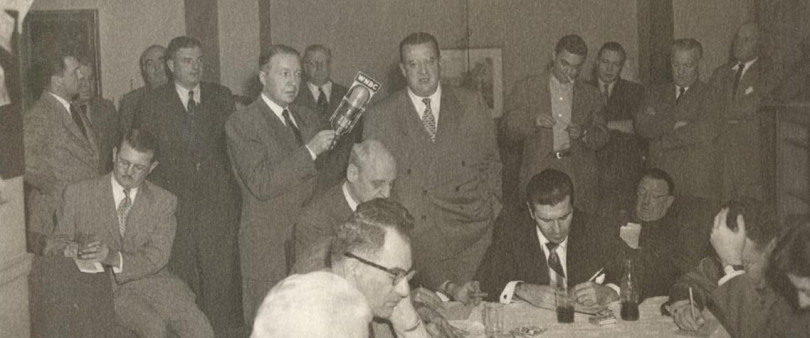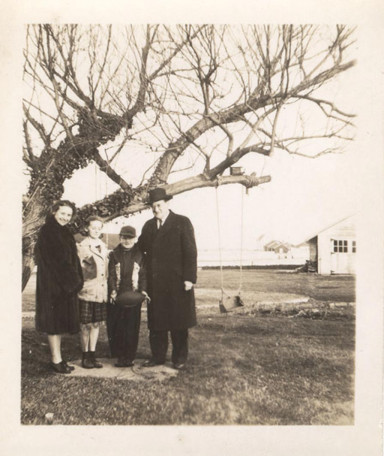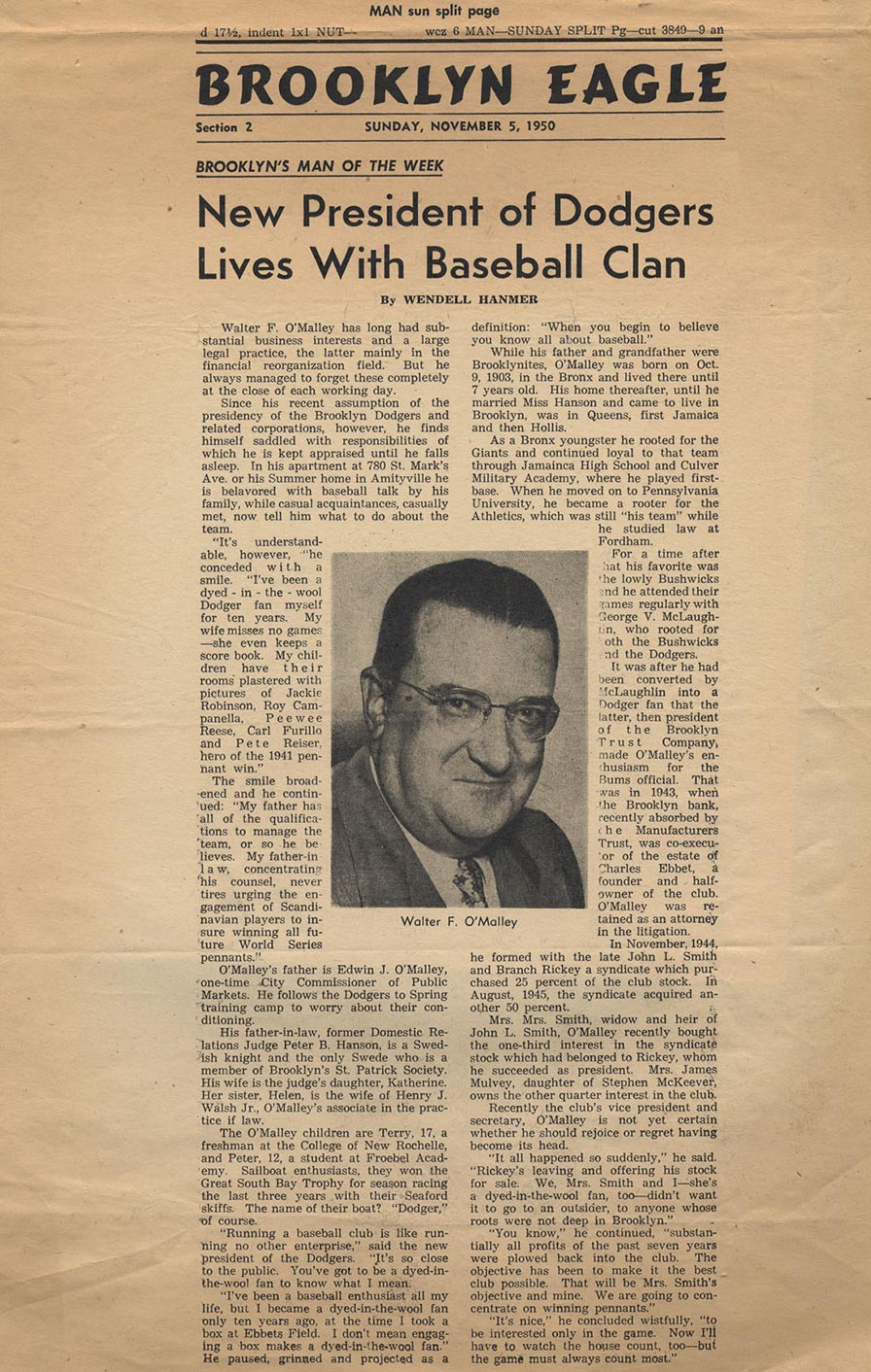
Reference Biography: Walter O’Malley
A New Era Begins
After taking charge as Dodger President on October 26, 1950, the 47-year-old O’Malley immediately started running the team in a more business-like manner. While the on-field performance was still critical to him and one he never neglected, O’Malley also worried about the parking problems, the dilapidated seats at the ballpark and the cleanliness of Ebbets Field. He wanted to put money into fixing up the field, not just in the talent on the field. After all, fans did not want to attend games even to watch the best ballplayers, if the experience was sub par.
O’Malley also moved his family to Amityville, Long Island, NY in 1950. Previously, it was his parents’ summer house, but after remodeling it, the O’Malleys decided to live there on a full-time basis, relocating from St. Marks Avenue in Brooklyn.

The O’Malley family at Amityville, Long Island, New York circa middle 1940s.
Almost immediately, O’Malley was named to the powerful Major League Baseball Executive Council, a leadership committee he served on for 28 years, longer than any other owner in history. This important body was designed to give direction, set policies and deal with the global issues confronting the game. As a full-time owner, not one who made it a hobby, or just had occasional dealings with his team, O’Malley’s power grew quickly because he was acknowledged as the most informed and insightful of his peers.
Former Chicago White Sox owner and promotions guru Bill Veeck said about O’Malley, “He is probably the only owner in baseball who spends time thinking about baseball. Ross Newhan, The Sporting News, February 19, 1977 A great many owners never do think about baseball. He works at his business.” Augie Borgi, April 20, 1973

The Brooklyn Eagle profiled Dodger President Walter O’Malley on Nov. 5, 1950.
O’Malley was looking at a nearly 40-year-old plus ballpark and wondering how he and the Dodgers could compete in the long term. Even while Vice President and General Counsel, O’Malley was working on a study with Madigan-Hyland designers in 1947 to find a site for a new Dodger stadium, because the inadequate facilities at Ebbets Field needed major attention.

